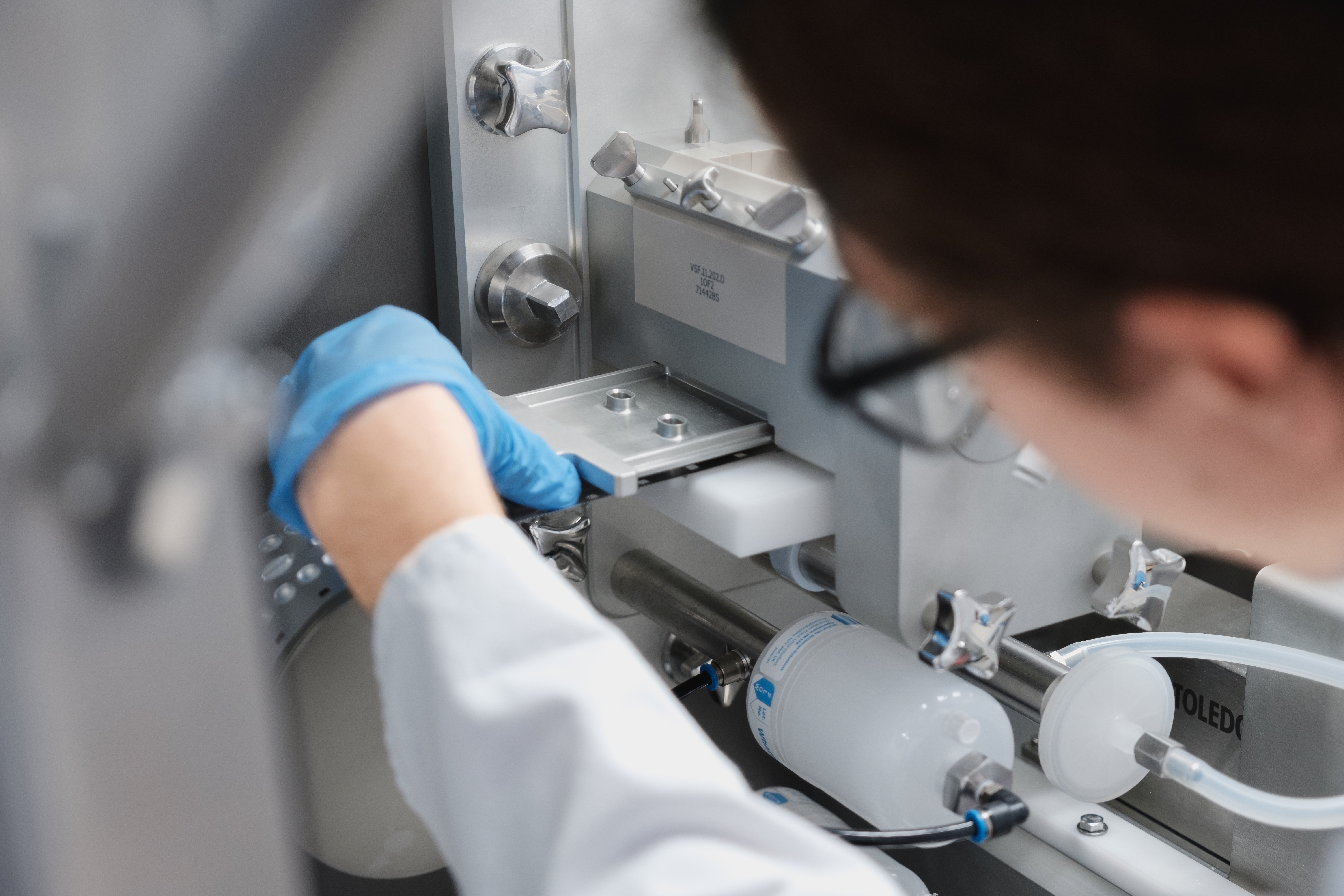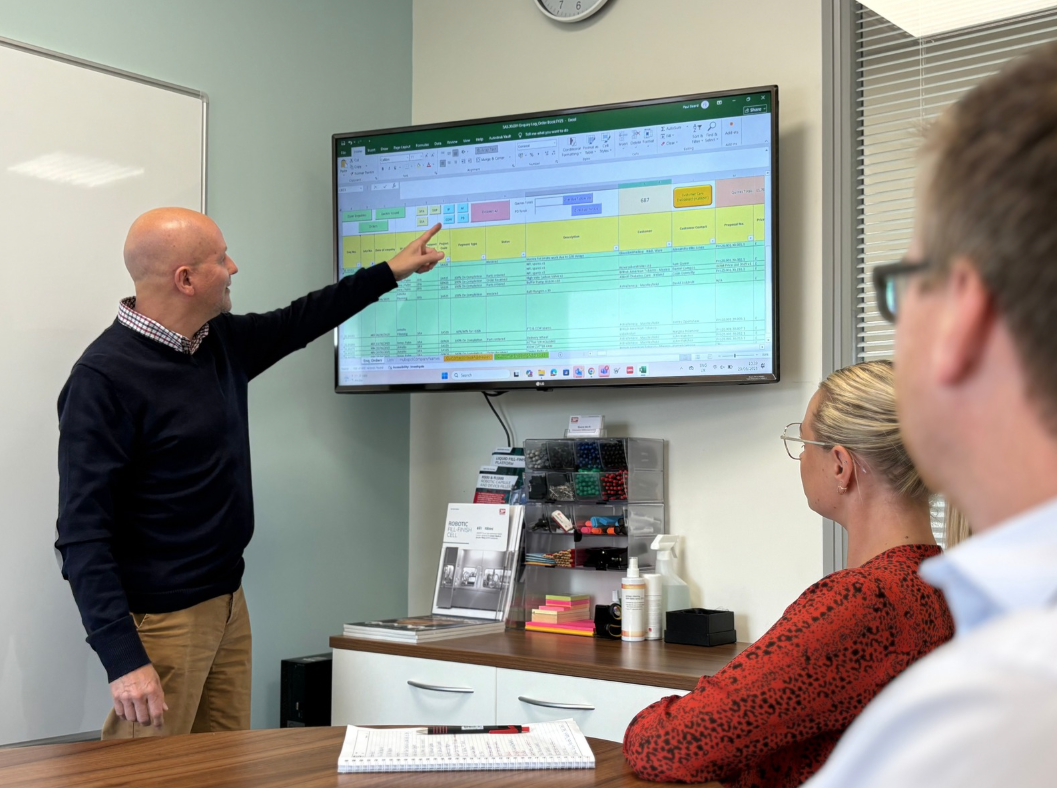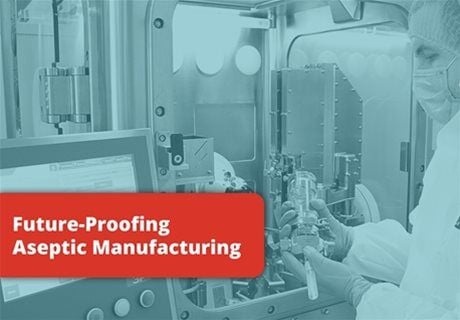The Future of Aseptic Manufacturing: Compact and Advanced Solutions
As the pharmaceutical industry advances into more complex modalities, from biologics to cell and gene therapies, the need for flexible,...
In our previous blog post, ‘4 Factors to Consider During the Design Process in Aseptic Manufacturing’, we discussed the objectives that the design process should set out to achieve for new aseptic manufacturing challenges. For our third blog post, we will be discussing the importance of developing flexible solutions that can support next-generation formulations, accommodate different filling environments and fulfil changes in production volumes for years to come.
Pharmaceutical manufacturers are becoming increasingly active in the search for evolving technologies that can provide flexible, future-proof aseptic solutions. Although flexible systems may cost more initially and take longer to develop, they have the ability to support the total life-cycle from early-stage manufacturing to commercial production and handle challenging drug properties to eliminate the need to purchase new technologies. As with any automation investment, the goal should also be to ensure improved labour productivity and safety, manufacturing reliability, product quality and, where required, faster throughout to achieve the overall goal of shortening product development lead times. This makes for a cost-effective and robust investment.
The increasing complexity of manufacturing new drugs has stimulated a growing demand for flexible solutions. Many traditional filling systems are unable to handle changing drug properties, which impacts the accuracy of doses. As mentioned in our previous blog, it is highly important to specify and design flexible equipment that can accommodate changing properties of the drug quickly (e.g. viscosity of liquids, powder flow properties etc). This agility and flexibility will, for example, be a major enabler for low dose and potent drug handling to support next-generation powders and formulations of the future. This includes the ability to fill very low dose weights of pure API or higher concentrations of API, without significantly impacting production speed. Although these two features don’t often go hand in hand, manufacturers cannot afford to lower production speeds when there are increasing pressures to decrease drug-development lead-times. Advanced aseptic processing solutions are therefore required to accommodate wide-ranging properties for both liquid and powder formulations.
The shift towards more automated aseptic processing lines is being driven by regulatory demands, including pressures to eliminate operator-related risks in order to improve product safety and reduce risks to patients. ‘Gloveless’ manufacturing solutions is one of the major themes to support this goal, where the absence of gloves in isolators and RABs means that systems must be fully automated, with operators managing just the loading and unloading of materials, containers and finished product. Regulators are encouraging parenteral manufacturers to ‘automate more’ during the pre-clinical and early clinical phases to reduce human operator influences on the process, to improve product quality and safety and also operator safety. Automated aseptic fill-finish at the early stages of drug manufacturing needs to provide for high flexibility; capable of filling a wide range of container types and devices on the same machine, including syringes, cartridges, vials, bottles and customised drug containers. Machinery design innovation is essential to deliver systems that can be changed over rapidly, with minimum change parts and with intuitive, recipe-driven control systems to provide automatic adjustment of key processes such as dose weight, weighing, vacuum stoppering, nitrogen flushing and rotary crimping. Quick and effective methods for cleaning of the equipment must also be defined. ‘Clean in Place’ (CIP) and ‘Wash in Place’ (WIP) technologies are two examples of automated methods being increasingly considered. These provide a number of benefits, including improved drug containment and operator safety, reduced risk of cross-contamination, faster changeovers and increased productivity.
With the objective of helping customers to address the above challenges, 3P has developed the award-winning Fill2Weight powder-dosing technology and F2V Liquid Fill-Finish Platform.
F2V is flexible, scalable, easy to use and clean, and can be integrated with other modules for higher-volume semi-automated and fully automated liquid filling and stoppering. The technology fills and closes syringes, vials, bottles, cartridges and custom containers (including diagnostics) in the same machine, with a fast changeover time of less than five minutes.
Fill2Weight is the world’s fastest, gravimetric powder micro-dosing technology, designed to meet the increasing need for high-accuracy, precision powder filling in cleanroom and sterile environments for inhalation, parenteral and oral solid dose (OSD) applications. Fill2Weight is a scalable system that supports manufacture from clinical supply through to commercial production. The system is highly innovative as it combines several different technologies in one solution to get challenging powders to flow and dispense accurately. The result of both solutions is a faster product launch and faster return on investment.
To find out more about our flexible and future proof solutions, visit our Pharma Equipment page

As the pharmaceutical industry advances into more complex modalities, from biologics to cell and gene therapies, the need for flexible,...

Our DPI blister filling capabilities draw on long-standing experience, our founder, Tom Bailey, is one of the named inventors of the DPI filling...

This week, I had the chance to sit down with Paul Beard, Operations Director at 3P innovation, to explore what truly distinguishes our Customer Care...
